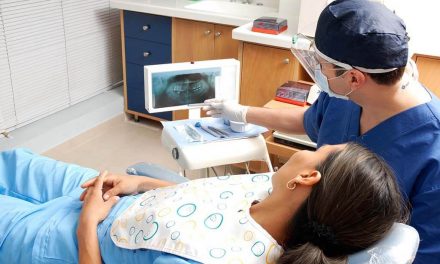Breast reduction surgery, also known as reduction mammoplasty, is a procedure designed to remove excess breast tissue, fat, and skin. Many women choose this operation to ease physical symptoms such as neck pain, shoulder pain, and chronic discomfort caused by large breasts. Others pursue it for cosmetic or emotional reasons, improving body image and quality of life. The surgery involves reshaping the breasts, reducing breast size, and lifting them into a more proportional position. It can be life-changing, but one of the most common questions asked by patients is simple: how long is breast reduction surgery?
For most patients, breast reduction is not just about appearance but about achieving relief from the physical symptoms that large breasts can bring. This procedure is often considered medically necessary, especially when conservative measures like weight loss, physical therapy, or supportive bras fail to provide lasting relief.
How Long Does Breast Reduction Surgery Take?
Average Time in the Operating Room
For most patients, breast reduction surgery lasts between two and four hours. The exact time varies depending on the surgical technique used, the amount of excess breast tissue and skin being removed, and whether additional procedures such as liposuction or nipple repositioning are performed.
Plastic surgeons generally estimate a standard breast reduction about three hours, though more complex cases may require extra time.
Factors That Can Extend Surgery Duration
- Breast Size and Tissue Removal
Women with larger breasts often require more extensive tissue removal. This can involve working with glandular tissue, fat, and excess skin. - Surgical Technique
Techniques such as the inferior pedicle method or vertical reduction method affect timing. Some approaches require more incisions and reshaping. - Skin Graft or Reconstruction Needs
In rare cases, when the nipple or areola requires additional reconstruction or skin grafts, the procedure may be longer. - Surgeon’s Approach
Each board-certified plastic surgeon has their own style and pace. Thorough care during tissue removal, reshaping, and wound healing preparation can take time. - Patient’s Medical History
Patients with underlying health concerns, such as diabetes or high blood pressure, may need additional monitoring and slower progress to ensure safety.
Outpatient or Inpatient: Does It Matter for Time?
Most breast reduction procedures are performed as outpatient surgery. This means patients can usually return home the same day, after several hours in recovery. However, some women may stay overnight if their surgery was extensive, if drainage tubes were placed, or if the care team wants to monitor them closely.
Preparing for the Procedure: What to Expect Before Surgery
 Weeks Prior to Surgery
Weeks Prior to Surgery
In the weeks prior, your surgeon will ask you to complete medical tests, share your medical history, and review any medications you take. Some patients are asked to stop smoking, avoid certain prescriptions, or adjust their routine for safety.
Many women are also asked to maintain a stable weight and avoid heavy lifting. This preparation phase helps ensure smooth surgery and better wound healing.
Meeting With Your Surgeon
During pre-surgical consultations, your surgeon will explain the procedure, discuss the expected duration, and outline potential complications. They may also show you where incisions will be made and how much breast tissue can be removed to achieve your desired results.
What Happens During Breast Reduction Surgery?
Step 1: Anesthesia and Safety Measures
The procedure begins with anesthesia. Most patients receive general anesthesia, ensuring they remain comfortable throughout the operation.
Step 2: Incisions and Accessing Breast Tissue
Incisions are made in patterns depending on the amount of reduction needed. Common approaches include around the areola, down the center of the breast, or along the breast fold. These incisions allow the surgeon to access excess tissue and reshape the breast.
Step 3: Tissue Removal and Reshaping
Surgeons carefully remove glandular tissue, fat, and skin. Sometimes liposuction is performed to refine the chest and decrease breast volume.
Step 4: Nipple and Areola Adjustment
The nipple and areola are often repositioned to a higher point on the breast for a natural appearance. In some cases, the areola is also reduced in size.
Step 5: Closing the Incisions
The incisions are closed with sutures, skin adhesives, or surgical tape. Drainage tubes may be placed to help reduce swelling and fluid buildup.
Recovery Timeline: Beyond the Operating Room
Immediate Recovery
After surgery, patients are monitored in a recovery area. Most patients wake up within 30 minutes after anesthesia. Pain relief medications are provided to control discomfort.
First Two Weeks
- Swelling and bruising are common
- Light activities are encouraged, but heavy lifting must be avoided
- Drainage tubes, if placed, are typically removed within the first week
- Patients usually wear a surgical bra to support healing
Two Weeks to Six Weeks
During this stage, many women feel well enough to resume normal daily activities, though physical therapy or gentle stretching may be recommended. Avoiding strain on the chest is important to prevent wound complications.
Long Term Recovery
Complete healing can take several months. Scars continue to fade over time, and final results are usually visible within six months to one year.
Risks and Potential Complications
Like any type of surgery, breast reduction comes with some risks. Knowing about these possibilities helps patients prepare and make informed choices. While most patients recover smoothly, it is important to understand what could happen.
Infection
As with any surgical procedure, there is a small chance of infection. To reduce this risk, surgeons usually prescribe antibiotics and provide instructions for wound care. Keeping the surgical area clean and following your care team’s advice are key steps in preventing problems.
Swelling and Delayed Wound Healing
It is normal to have some swelling after surgery, but healing can take longer than expected in certain cases. Patients with conditions like diabetes or smokers may have a higher chance of delayed wound healing. Regular follow-up visits allow the surgeon to check progress and step in early if there are concerns.
Nipple Sensitivity Changes
Changes in nipple or areola sensitivity are quite common after breast reduction. Some women notice numbness, while others feel heightened sensitivity. These changes are often temporary, but in some cases, they may be long-lasting.
Scarring
All surgeries leave some scarring, and breast reduction is no different. Scars usually fade over time and become less noticeable. Surgeons often place incisions in areas that can be hidden under bras or swimsuits, and they may suggest scar care treatments during recovery.
Fluid Buildup Requiring Drainage
Some patients may experience fluid collecting under the skin, known as a seroma. Surgeons often place small drainage tubes right after surgery to prevent this. If fluid does build up later, it can usually be drained in the office without further surgery.
Rare Cases of Skin or Nipple Tissue Loss
In rare situations, especially when very large amounts of tissue are removed, problems with blood supply to the nipple or skin can result in partial tissue loss. Skilled plastic surgeons use techniques designed to keep blood flow strong, making this complication uncommon.
The Good News
Most patients heal well and do not experience serious complications. Choosing a board-certified plastic surgeon, following all pre- and post-surgery instructions, and keeping up with follow-up appointments greatly improve the chances of a smooth recovery.
Tips to Lower Your Risk
While no surgery is completely risk-free, patients can take many steps to reduce the chance of complications and promote smooth healing.
- Choose a qualified surgeon.
Make sure a board-certified plastic surgeon performs your procedure. Their training and experience help ensure that the surgical technique used is safe and effective. - Be open about your medical history.
Share all details of your medical history, including any chronic conditions, medications, or previous surgeries. This helps your care team plan ahead and manage potential risks. - Follow pre-surgery instructions.
Your surgeon may ask you to stop smoking, avoid alcohol, or pause certain medications in the weeks prior to surgery. These steps improve blood flow and support better wound healing. - Maintain good overall health.
Eating a balanced diet, staying hydrated, and keeping a stable weight before surgery can strengthen your body’s healing ability. - Care for your incisions properly.
After surgery, follow your wound care instructions closely. Keep the area clean, avoid soaking in baths or pools until cleared, and change dressings as directed. - Wear your surgical bra.
The support garment provided after surgery reduces strain on the breasts, helps with swelling, and keeps incisions stable during the healing process. - Go to all follow-up visits.
Regular checkups allow your surgeon to monitor healing, remove drainage tubes if needed, and catch any issues early. - Avoid heavy lifting.
Strenuous activities and heavy lifting should be avoided for at least two weeks, or until your surgeon gives you the all-clear. This protects your incisions and lowers the risk of delayed healing. - Watch for warning signs.
If you notice unusual swelling, redness, fever, or severe pain, contact your surgeon right away. Early treatment can prevent minor issues from becoming major problems.
By taking these steps, many patients find their recovery is smoother, their results more satisfying, and their risk of complications significantly lower.
Why Some Surgeries Take Longer
While most breast reduction surgeries take around two to four hours, there are situations where the procedure may take longer. The length of the operation depends on many factors unique to each patient.
Very Large Breasts Requiring Extensive Tissue Removal
When breasts are significantly larger than average, the surgeon needs more time to remove glandular tissue, fat, and excess skin carefully. The larger the volume of tissue removal, the more meticulous the reshaping process becomes. Surgeons must also ensure that the blood supply to the nipple and areola is preserved, which can add to the overall time in the operating room.
Previous Breast Surgery or Breast Reconstruction Work
Patients who have had previous breast surgery, such as augmentation, reconstruction, or prior reduction surgery, often require a more detailed approach. Scar tissue from earlier procedures can complicate access to the breast tissue, and the surgeon may need to navigate existing incisions or altered anatomy carefully. This adds an extra layer of precision, naturally increasing the time spent in surgery.
Correcting Asymmetry
Breast asymmetry is common among women, where one breast is noticeably larger or shaped differently than the other. During reduction surgery, a surgeon may need to spend additional time tailoring each breast individually to achieve balance and harmony. The more pronounced the asymmetry, the longer the procedure may take.
More Complex Surgical Techniques
Certain surgical techniques require more time than others. For example, the inferior pedicle method or approaches involving free nipple grafts are more intricate and demand careful attention to detail. If liposuction is added to refine the chest area or further reduce breast size, this can also extend the duration.
Additional Factors That Influence Timing
- Patient’s medical history: Women with underlying conditions such as diabetes or hypertension may require closer monitoring during surgery, slowing the overall pace.
- Body weight and skin quality: Excess weight or reduced skin elasticity may require extra adjustments for the best results.
- Desired results: Some patients prefer a more conservative reduction, while others require a more dramatic decrease in breast size. Tailoring the approach to meet each patient’s goals adds complexity and time.
Why Consultation Matters
Because every woman’s anatomy and goals are different, the time needed for breast reduction surgery is not the same for everyone. A consultation with a board-certified plastic surgeon is the best way to get a personalized estimate. During this appointment, the surgeon will evaluate your breasts, review your medical history, and discuss which surgical technique is most suitable for you.
Is Breast Reduction Always Medically Necessary?
Not every woman who chooses breast reduction surgery does so because of medical necessity. For some, the decision is largely personal, focusing on body image, comfort in clothing, or a desire for a more proportional breast size. For others, the procedure is recommended by a care team because it directly addresses ongoing health problems.
When It Is Considered Medically Necessary
Breast reduction is often considered medically necessary when large breasts cause persistent physical symptoms that affect daily life. These symptoms may include:
- Neck pain and shoulder pain caused by the constant weight of excess tissue and bra straps digging into the skin.
- Chronic back pain that does not improve with physical therapy or other conservative measures.
- Skin problems include rashes, irritation, or infections in the folds under the breasts.
- Limitations in activity where exercise, sports, or even simple movements become difficult due to breast size and discomfort.
In these cases, reducing breast tissue and excess skin can provide significant relief, improving both physical health and quality of life.
Documentation and Insurance Coverage
Insurance companies generally require clear documentation to approve breast reduction as a covered procedure. Patients are often asked to provide:
- Records of conservative treatments such as physical therapy, chiropractic care, or pain medications that did not lead to improvement.
- Evidence of weight loss attempts, if excess weight may be contributing to the symptoms.
- Notes from doctors describing physical symptoms and the impact on daily activities.
- Photos or medical assessments showing the size of the breasts and the presence of conditions like deep shoulder grooves from bra straps or chronic skin irritation.
The insurance company may also require an estimate of the amount of breast tissue that will be removed, since some policies only cover surgery if a minimum amount of tissue is excised.
When It Is Not Medically Necessary
On the other hand, breast reduction is not always linked to medical necessity. Many women pursue the surgery for reasons such as:
- Improving body image and self-confidence
- Achieving a more balanced figure
- Making it easier to find clothes that fit properly
- Reducing feelings of self-consciousness about large breasts
Insurance coverage is less likely in these cases, and the procedure is usually paid for out of pocket. Even so, many women feel the benefits in terms of comfort, mobility, and self-esteem are worth the investment.
Why the Distinction Matters
Understanding the difference between medical necessity and elective reasons is important for both patients and surgeons. It influences insurance coverage and the way the procedure is approached. A surgery performed primarily for symptom relief may focus on maximum tissue removal to reduce physical strain, while one performed for aesthetic reasons may prioritize breast shape and contour.
In either case, consultation with a board-certified plastic surgeon is the best way to determine whether breast reduction will meet your needs. A thorough review of your medical history, physical symptoms, and desired results will help your care team guide you toward the right decision.
Who Is a Candidate for Breast Reduction Surgery?
Not every woman struggling with large breasts is automatically a candidate for breast reduction surgery. Surgeons look at a combination of health, physical symptoms, and personal goals before recommending the procedure.
General Health Requirements
Candidates for breast reduction should be in generally good health. This means:
- No uncontrolled medical conditions such as heart disease, diabetes, or severe obesity.
- Non-smokers, or those willing to quit smoking weeks prior to surgery, since smoking interferes with wound healing.
- Patients who are not currently pregnant or breastfeeding. Breast reduction is best performed after breastfeeding and breast size have stabilized.
Being in good health lowers the risk of complications and helps ensure smooth wound healing after surgery.
Physical Symptoms That Point to Candidacy
Many women consider breast reduction because of the physical strain that large breasts place on their bodies. Symptoms that may indicate medical necessity include:
- Neck, back, or shoulder pain from the weight of excess breast tissue.
- Deep grooves in the shoulders from bra straps digging into the skin.
- Skin irritation, infections, or rashes under the breasts.
- Difficulty exercising or playing sports due to breast size and discomfort.
- Poor posture or spinal strain caused by uneven weight distribution across the chest.
If conservative measures like weight loss, physical therapy, or supportive garments have not relieved these symptoms, breast reduction surgery may be the next step.
Emotional and Lifestyle Considerations
Beyond physical pain, many women with large breasts experience emotional or lifestyle challenges, such as:
- Feeling self-conscious about breast size.
- Struggling to find clothes that fit comfortably or attractively.
- Avoiding certain activities or social situations due to discomfort.
Improving body image and boosting self-confidence are valid reasons to pursue breast reduction. Many patients report that their overall quality of life improves significantly after surgery.
Age and Timing
Breast reduction is commonly performed on adult women, but younger patients may also be considered if their breast development is complete and symptoms are severe. Most surgeons recommend waiting until breast growth has stabilized, usually by the late teens or early twenties, before undergoing reduction surgery.
For older women, breast reduction is still an option as long as they are in good health and cleared for surgery.
Realistic Expectations
Another important factor is having realistic expectations. Breast reduction can dramatically decrease breast size, improve proportions, and relieve physical symptoms. However, patients should understand that:
- Some scarring is inevitable, though it usually fades with time.
- There may be changes in nipple or areola sensation.
- Results vary depending on body type, surgical technique, and healing.
A good candidate understands both the benefits and the limitations of surgery.
Willingness to Follow Post-Operative Instructions
Healing well requires effort from both the surgeon and the patient. Ideal candidates are committed to: 
- Wearing supportive garments during recovery.
- Avoiding heavy lifting for several weeks.
- Attending follow-up appointments with the care team.
- Reporting any unusual symptoms promptly to reduce the risk of complications.
By following these instructions, most patients achieve excellent outcomes and enjoy long-term relief from the challenges of large breasts.
Recovery and Lifestyle Adjustments
Pain Relief and Support
Most patients are prescribed medications to ease pain and reduce infection risk. Wearing supportive bras helps take pressure off incisions and bra straps.
Activity Restrictions
Heavy lifting and strenuous exercise should be avoided for at least two weeks. Most patients gradually return to full activity within four to six weeks.
Long-Term Benefits
The benefits include relief from chronic pain, improved mobility, easier clothing options, and enhanced self-esteem. Many patients report a complete resolution of neck and shoulder pain within months.
The Emotional Side of Breast Reduction
Breast reduction surgery helps reduce physical symptoms and improves emotional well-being. Many women find new confidence, better body image, and freedom from the daily challenges of carrying excess tissue.
Final Thoughts
So, how long is breast reduction surgery? For most patients, it takes about two to four hours in the operating room, with additional time for preparation and recovery. While the surgery itself may be completed in a few hours, recovery and healing take weeks to months.
Breast reduction surgery offers lasting relief from physical discomfort, significant improvements in body image, and the chance to live without the burden of large breasts. With proper planning, support from a skilled care team, and realistic expectations, many patients achieve the desired results and enjoy long-term benefits.
References:
https://www.hopkinsmedicine.org/health/treatment-tests-and-therapies/breast-reduction-surgery
https://my.clevelandclinic.org/health/treatments/11025-breast-reduction
https://www.nhs.uk/tests-and-treatments/cosmetic-procedures/cosmetic-surgery/breast-reduction-female/
https://www.plasticsurgery.org/news/blog/what-to-expect-after-your-breast-reduction-surgery
https://www.jeffersonhealth.org/your-health/living-well/breast-reduction-surgery-what-expect-during-after






Recent Comments